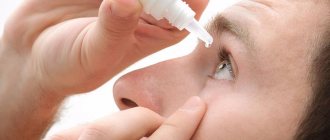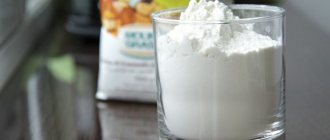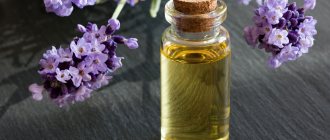Symptoms of the disease
In the first 10 days after infection, the disease occurs without symptoms. After this, the patient begins to be bothered by the following symptoms:
- moderate headache;
- muscle pain;
- feeling of tiredness, fatigue;
- temperature increase;
- nausea;
- vomit;
- diarrhea.
Some patients also experience decreased appetite, often leading to anorexia. Voluminous red spots appear on the skin.
Symptoms
To understand that you have erysipelas, you need to take into account the following symptoms of the disease:
- Severe increase in temperature (up to 40 degrees). However, this symptom persists for a short time (about one day).
- The appearance of a large spot on the skin of the leg. Features: bright red color, hot to the touch, rapid increase in size (up to 10 cm per day), sharp pain in the form of burning and itching. Detachment of the epidermis and the formation of blisters are possible.
- Malaise, headache and muscle pain.
- Vomiting and nausea.
Most often, the disease is typical for representatives of the fairer sex.
Medicines for treatment
The basis of therapy is antibiotics. The best therapeutic effect for erysipelas is provided by Biseptol, Erythromycin, Oleanodomycin.
Antibiotics are taken in combination with vitamins A, B, C, anti-inflammatory drugs, diuretics and medications to reduce vascular permeability.
The treatment regimen, dosage of drugs and duration of therapy are determined by the doctor individually for each patient.
Effective ointments
Erythromycin ointment effectively treats erysipelas. Belongs to the group of antibiotics, allows you to fight the direct causative agent of infection - streptococcus. A very high-quality product for external use, which also has an affordable price.
Optimal treatment regimen: apply the product to the affected area three times a day. It is permissible to make compresses - fold the bandage in several layers, apply a thick layer of ointment on it and apply it to the infected area, fixing it on the leg.
Tetracycline ointment has a similar effect. Refers to potent antibiotics, the method of use is identical to Erythromycin ointment.
Streptocide
For erysipelas, streptocide will help, which has a bactericidal and antimicrobial effect. Moreover, it can be used both internally and externally. For oral administration, 0.5 g is prescribed, which must be taken every 5-6 hours.
For external use, use sterile powder (no more than 15 g per procedure). The infected area is treated with powder.
Important! The recommendations presented should not be taken as instructions for action. Any drugs for internal and external use must be prescribed by a doctor!
How to treat erysipelas?
Treatment of erysipelas is carried out taking into account the clinical form and severity of the disease. Its leading direction is antibacterial therapy. Although sometimes staphylococci are also isolated on the surface of the skin in addition to streptococcus, most clinicians deny the need to use protected penicillins for erysipelas. It is also considered inappropriate to use antibacterial agents that act on staphylococcal strains in typical cases of the disease. For primary and recurrent erysipelas, the drug of choice remains penicillin, which is prescribed in a dose of at least 1 million units 6 times a day intramuscularly for at least 7-10 days, and sometimes more. However, due to certain technical problems (the need for frequent parenteral administration), its use is limited primarily to hospital treatment.
It is possible to use ampicillin or amoxicillin, cephalosporins (ceftriaxone, cefotaxime or ceftazidime intramuscularly). For mild cases, oral antibiotic therapy with aminopenicillins is indicated. It is also possible to use cephalosporins orally (fadroxil, cephalexin, cefuroxime, cefixime). After the clinical symptoms of erysipelas disappear and body temperature normalizes, it is recommended to use these antibacterial drugs for at least 3 more days.
In case of primary erysipelas, especially in the case of an allergy to penicillin, azithromycin, midecamycin, josamycin, clarithromycin or roxithromycin are prescribed orally. It is also recommended to take ciprofloxacin or ofloxacin for 7-10 days.
For erythematous-bullous lesions in the primary or recurrent form of erysipelas, the same antibacterial treatment, supplemented with local treatment, is carried out. In the acute period, restriction of movements is recommended, especially with erysipelas of the lower extremities. An elevated position of the limb is necessary to improve venous outflow and reduce swelling. It is not recommended to open the blisters, since the erosions that form during erysipelas heal poorly and very slowly. The wound surface gradually dries out, and new layers of epidermal tissue form under the wrinkled crust. If erosions occur, it is better to apply bandages with hypertonic sodium chloride solution, 0.02% furatsilin solution, chloroform, which are changed several times during the day. After the affected surface dries and good granulation appears, the wounds are periodically lubricated with 10% methyluracil ointment or chlorophyllipt spray to accelerate the healing of eroded surfaces.
For any uncomplicated erysipelas, it is contraindicated to use local preparations containing substances that increase exudation and cause the formation and rupture of blisters (for example, Vishnevsky ointment), and tight bandaging of the limbs. Oral detoxification is indicated; in case of severe erysipelas, active intravenous detoxification therapy is carried out according to the general rules.
In addition to etiotropic drugs, patients with hemorrhagic lesions are prescribed vitamin complexes that strengthen the vascular wall, for example ascorutin. Modern antihistamines are also used. Physiotherapeutic methods can include suberythemal doses of ultraviolet irradiation. In case of severe regional lymphadenitis or intense pain syndrome in persons without concomitant diseases of the cardiovascular system, UHF therapy is sometimes used (3-6 sessions per affected area or regional lymph nodes). In case of purulent local complications, standard surgical treatment is performed. For a speedy recovery, ozokerite, naphthalan ointment, paraffin applications, lidase electrophoresis, and calcium chloride are prescribed.
Treatment of chronic erysipelas should be carried out in a hospital setting. It is mandatory to prescribe reserve antibiotics that were used in the treatment of previous relapses. Sometimes, with frequent relapses, it is necessary to prescribe several courses of various antibacterial drugs. In addition, you can use normal polyspecific human immunoglobulin, which contains a wide range of neutralizing antibodies to streptococcal antigens. In case of chronic erysipelas, it is first necessary to carry out aggressive therapy for concomitant diseases that contribute to chronicity (mycoses, venous insufficiency, thrombophlebitis, etc.), or, for example, to achieve compensation for diabetes mellitus. Necessary measures are the identification and sanitation of chronic foci of streptococcal infection in the body. Immunocorrective therapy is also indicated, but the list of drugs, the duration of their use and dosage each time require an individual approach with an assessment of the level of changes in the immunogram, the severity of concomitant diseases, etc.
Folk remedies for the treatment of erysipelas
The secrets of traditional medicine are no less effective in treating erysipelas on the skin.
Beaver jet treatment
Beaver stream is available in the form of extract and powder. The powerful healing composition of the product has a bactericidal effect, accelerates wound healing, and strengthens the immune system.
To treat erysipelas, the affected area is treated with sterile powder. You can also make compresses - a bandage folded in several layers is moistened in the extract and fixed on the leg in the affected area.
Potato
Raw potatoes will help treat erysipelas. It must be grated on a fine grater and squeezed thoroughly to form juice. Soak a gauze bandage in it, then apply it to the leg at the site of infection. Change the bandage at least 4 times a day.
Honey
Honey is a natural antibiotic and has an antiseptic, anti-inflammatory, and decongestant effect. To treat erysipelas, you need to generously smear red silk fabric with honey and fix it in the area where the disease appears.
If you perform this procedure daily, you will notice a positive result within a week.
Herbal decoctions, compresses and infusions
Using infusions, compresses and decoctions, you can make effective medicinal lotions:
- fresh plantain leaves in a mortar and then chop. Add thick honey and stir. Place the mixture in a water bath, wait until the honey becomes semi-liquid. Let the mixture brew for 2-3 hours. Treat your foot with the prepared infusion every day.
- the yarrow leaves thoroughly and pour boiling water over them. Leave for 2 hours. Take out the leaves and apply them to your leg. Apply a gauze bandage soaked in the infusion on top.
- calendula, dandelion (flowers), oak bark in equal proportions . Fill with water and place on low heat. Bring to a boil, remove from heat and cool. Rinse your foot regularly with the decoction.
- Mix dry chamomile and coltsfoot leaves , then add thick honey and stir until smooth. Apply the resulting mixture to the skin, after half an hour, clean the body with a damp cotton swab.
It is important to remember that infusions and decoctions should be at a comfortable temperature when used.
Symptoms
To understand that you have erysipelas, you need to take into account the following symptoms of the disease:
- Severe increase in temperature (up to 40 degrees). However, this symptom persists for a short time (about one day).
- The appearance of a large spot on the skin of the leg. Features: bright red color, hot to the touch, rapid increase in size (up to 10 cm per day), sharp pain in the form of burning and itching. Detachment of the epidermis and the formation of blisters are possible.
- Malaise, headache and muscle pain.
- Vomiting and nausea.
Most often, the disease is typical for representatives of the fairer sex.
Other effective treatments
There are several more effective folk methods for treating erysipelas:
- Fresh cottage cheese will help cope with infectious diseases . It needs to be laid out in a thick layer on the leg, where the disease manifests itself. As soon as the cottage cheese begins to dry out, you need to remove it and add a fresh layer. Repeat at least 5 times in a row.
- One of the most popular folk methods for treating erysipelas is the use of chalk . It needs to be crushed into powder, sprinkled on the affected area, covered with a gauze bandage and wrapped in a towel.
- Chitosan gel with silver ions ArgoVasna Lilac has proven itself well in the treatment of erysipelas. Silver ions have a bactericidal effect on the skin, chitosan (crushed crab shell) promotes skin healing, lilac is famous for its anti-inflammatory, absorbable and anti-edema properties. The properties of lilac are used in folk medicine to heal minor wounds and for erysipelas.
- In treatment, you can use not only raw potato juice, but also potato starch . Pour a teaspoon of starch onto a cotton swab, apply it to your leg and fix it. This compress can be kept for up to 2 hours. Repeat the procedure three times a day.
- the burdock leaf very thoroughly, then generously grease it with sour cream. Apply to the leg in the area of redness and wrap with gauze or a towel. Apply the compress 4-5 times a day. The compress can be made with ready-made burdock root extract. It can be taken orally, in combination with lotions. This will speed up the healing process.
If during the procedure the patient feels discomfort, such as itching or redness, it is better to stop treatment with the chosen method.
Contraindications
Any medical procedures should be carried out only in consultation with a doctor. Contraindications include:
- pregnancy;
- lactation period;
- immunity of the body to the components of the composition.
An allergic reaction to the components included in the drug may also develop.
In order not to aggravate the patient’s condition, self-medication is prohibited! It is important to remember that both medications and traditional medicine can cause negative consequences.
Treatment of erysipelas of the leg with medication
Erysipelas is usually treated with medication. Immunomodulatory and/or desensitizing therapy is carried out simultaneously with antibiotics. Since harmful microorganisms produce toxins during their life, they can cause allergies in the patient. To prevent the development of allergic reactions during the treatment of erysipelas, patients are prescribed antihistamines.
Often the pathology develops in the lower extremities. How to treat erysipelas on the leg? If the disease affects a limb, then the acute onset of the disease may occur only after a week. A person may suddenly develop symptoms of the disease such as muscle aches, migraines, high fever (up to 40°C), and general weakness. Often the diagnosis is made without analysis based on a combination of visual signs. Treatment of erysipelas of the leg is carried out with medication, both inpatient and outpatient.
Antibiotics for erysipelas
According to statistics, erysipelas ranks fourth in the prevalence of infectious diseases. How to treat erysipelas? Antibiotics have been and remain the priority in the fight against infection. The course is calculated by the doctor, depending on the form of the disease and the antibacterial drug. Immediately after starting to take antibiotics for erysipelas, the development of infection decreases and body temperature returns to normal. To treat erysipelas, 1st or 2nd generation antibacterial agents are used - cephalosporins (Cedex, Suprax, Vertsef) and penicillins (Retarpen, Benzylpenicillin, Ospen).
- Ultrasonic Bird Repeller
- Sberbank gold card: pros, cons and reviews
- Soup with dumplings: recipes
Ointment for erysipelas of the leg
When treating erysipelas on the leg, which is at an early stage, pastes for external use are not used. When the form of the disease becomes cystic, then Ichthyol ointment or Vishnevsky is prescribed. Naftalan gives excellent results at the recovery stage. Ichthyol ointment for erysipelas of the leg quickly helps get rid of itching, softens keratinization, and provides effective wound healing, provoking rapid skin regeneration.
The medicine has anti-inflammatory and antiseptic effects. For erysipelas, it is necessary to apply the product to the affected area, but not in its pure form, but in equal proportions with glycerin. The mixture is rubbed into a thin layer, then covered with gauze folded in 3-4 layers. The bandage is fixed with adhesive tape. It must be changed at least three times per day. The procedure is carried out until open wounds heal.
Vishnevsky ointment
How to treat erysipelas with Vishnevsky ointment? The topical preparation is also called balsamic liniment. The product contains three components: xeroform, birch tar and castor oil. Now the latter substance is often replaced with fish oil. Vishnevsky ointment has a pronounced anti-inflammatory and antiseptic effect. When treating skin pathologies, it helps restore the epidermis, accelerates the healing process, and has drying, antipruritic, and anesthetic properties.
In the absence of relapses, Vishnevsky ointment is prescribed for the treatment of erysipelas. The medicine promotes exudation and breakthrough of blisters. Apply the ointment to a gauze bandage in a thin layer, after which it should be applied to the affected area of the skin. The bandage is changed once every 12 hours. Since the drug can dilate blood vessels, doctors do not recommend using it for severe forms of erysipelas.
Prevention of erysipelas on the leg
As you know, it is easier to prevent a disease than to treat it later. To protect yourself from infection, you need to lead the healthiest lifestyle possible, consume healthy foods, and avoid stressful situations. In this way, it will be possible to strengthen the immune system and reduce the risk of infection.
It is also necessary to maintain personal hygiene, pay close attention to washing your feet, avoid various injuries and injuries, and do not overcool your feet.
Erysipelas is a dangerous pathology. At the first symptoms of the disease, you should immediately seek medical help. This will not only protect the patient from deterioration of health and complications, but also protect others from infection.
Phytotherapy
Herbs and plants are the best sources for relieving inflammatory processes. They can be used in the form of compresses, ointments and mixtures for internal use. The main thing is to choose your treatment option.
Coltsfoot, burdock and chamomile
We use coltsfoot for daily compresses and in combination with chamomile for internal use,
coltsfoot will help you quickly cope with inflammation. Most often it is used in the form of compresses, lubricating one part of the leaf with sour cream and applying it to the affected area overnight. For reliability, secure the application with a sterile bandage. The next morning, remove the compress, and if you are not in a hurry, it is better to repeat the procedure during the day, changing the leaves for fresh ones 3 times a day.
A compress using burdock leaves is similarly used to treat this disease.
And in order to consolidate the healing effect, it is also worth sprinkling the area of inflammation with powder from the dry leaves of the plant and drinking the infusion. As for the last remedy, it will not be difficult to prepare. You will need to take a tablespoon of coltsfoot leaves and pour a glass of boiling water over it, let the drink brew and filter it. Daily dose – 1 tsp. three times a day.
Coltsfoot also has an excellent healing effect when combined with chamomile. To prepare this composition, you will need to prepare fresh leaves of coltsfoot grass and chamomile flowers in equal proportions and mash them well. Store the prepared mixture in the refrigerator and use it to lubricate the affected area of the leg. However, in addition to external use, this composition can also be used internally, adding a little honey for taste. By eating a teaspoon of this mixture three times a day, you will very soon forget about inflammation.
Elderberry leaves and twigs
We moisten a compress with a decoction of elderberry and wash the affected areas with it.
Elderberry, as well as black or red currants, cope well with erysipelas. Moreover, not berries are used to prepare the medicine, but leaves and twigs of the bush. They are placed in a pan and filled completely with water, so that the liquid level is two centimeters higher. The broth must be allowed to boil for 15 minutes and leave for 2 hours.
In the meantime, prepare half a glass of unwashed millet, combine it with chicken protein and grind the mixture until smooth. Then apply this resulting remedy to the affected area, and cover the compress with a sterile cloth soaked in a pre-prepared elderberry decoction. Insulate your leg and leave the application on all night, and the next morning remove and wash the inflamed area with the remaining decoction. Then cover the inflammation with chalk.
Other means
Although many people trust herbs more in the treatment of erysipelas, there are still many methods that will help get rid of this disease. In the next selection we will consider the most famous recipes for alternative treatment.
Treatment options with chalk and red cloth
We crush the chalk and use it as a compress, always with a red cloth.
Chalk is very often used to treat erysipelas. Experts have long appreciated its merits, noting the high effectiveness of the treatment.
Moreover, when applying this method, another important element is used - red cotton fabric. It is on this that you need to pour crushed white chalk and tightly bandage the compress to the affected area overnight, and remove it the next morning. After performing this procedure, the redness and swelling disappear, but the itching remains. But this is not a problem - rubbing with apple cider vinegar will help you cope with it.
Red cloth is also widely used in self-medication. This method will seem absurd to many, but it is the one that has helped many patients get rid of their illness. All you need to do is wrap the erysipelas in a red cloth, place pieces of tow on top of it and set it on fire.
Be careful, when the tow burns out, remove the compress. A safer treatment option is to wrap the affected area in red cloth. However, in this case, you will have to run a heated soldering iron or a hot hair dryer over the fabric for 1–3 minutes. And to achieve maximum effect after performing this procedure, it is recommended to apply a salt compress at night.
Rye flour
Buy rye flour and sift it through a fine sieve. Now sprinkle flour on the inflamed area of the leg, place blue wrapping paper on top and secure everything with a sterile bandage.
As healers say, in order for recovery to occur as quickly as possible, this procedure must be done an hour before sunrise, changing the bandage once a day early in the morning.
Also remember: instead of rye flour, you can use finely sifted chalk powder.
Complications after erysipelas
The disease must be treated without fail, otherwise it will lead to the development of sepsis and the spread of infection through the vessels and other organs. Erysipelas affects the face and legs, and symptoms appear much less frequently in other places. The tumor changes places and occupies large areas.
Erysipelas of the face – scalp, mucous membranes of the nose, eyes, ears. Infection with erysipelas can spread to organs such as the kidneys, heart, and bone tissue. Abscesses appear, tissue death, ulcers in place of the blisters, and the walls of the veins become inflamed. Repeated erysipelas on the legs leads to elephantiasis.











